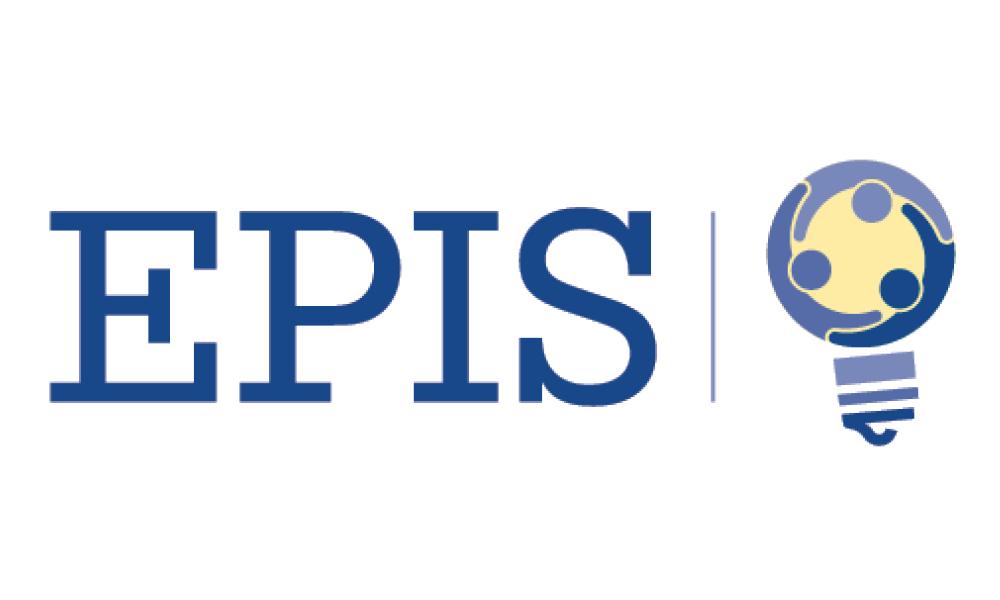Penn State team leads effort to prevent youth substance misuse in PA

high-five_AdobeStock_455007084_insta-photos-opt
Image: Adobe Stock/insta-photos
April 7, 2022
UNIVERSITY PARK, Pa. — A team of Penn State experts from Evidence-based Implementation and Intervention Support (EPIS) is leading the five-year Opioid Misuse Prevention Project (OMPP) to support community-based partnerships throughout Pennsylvania to prevent substance misuse and promote healthy development in young people and their families.
The team is working with sites in Beaver, Erie, Fayette, Schuylkill and Lancaster counties to implement and evaluate a comprehensive, research-based approach to prevention involving youth, parents, schools, non-profit organizations, agencies offering drug and alcohol programs, legislators, business owners, community coalitions and other community leaders.
“When a project such as OMPP is funded to have multiple community sectors coming together to help youth and families in targeted communities, it becomes a powerful strategic prevention approach around substance misuse.” said Geneen Burris, EPIS implementation specialist and the project’s lead coordinator.
The project takes a unique, four-component approach to prevention consisting of two programs offered in local middle schools, training for adults working with youth, and community outreach.
The participating school districts are offering the LifeSkills Training and Strengthening Families Program: For Parents and Youth 10-14 prevention programs for students ages 10-14. The programs focus on teaching students self-management skills, social skills, drug awareness, strengthening family connection and communication, and how to resist peer pressure. The schools receive free curricula, training and materials, and a project coordinator works with each of the schools.
“Research about PROSPER, a nationwide prevention research initiative, really highlighted the power of combining family-based programs with school-based prevention programs, said Jochebed Gayles, Assistant Research Professor of Health and Human Development with EPIS and the Edna Bennett Pierce Prevention Research Center (PRC). “In particular, youth who participated in both programs showed the greatest reduction in drug misuse as compared to other youth who received one or no programs.”
A community-wide approach to helping youth
The project offers training in the Social Development Strategy framework for anyone who works with youth in the comm. The focus is creating opportunities for youth to be involved in prosocial activities – such as caring for a class pet – teaching them the skills to be successful in their endeavor and providing public recognition of their success. The goal is for youth to form strong, attached relationships with people who hold healthy beliefs and clear standards.
Because community participation is essential to the project’s success, the project team is training people at each of the sites in creating communications plans and conducting focus groups.
“It’s been rewarding to lead communities through using focus groups to see what’s working and what isn’t, what we should keep doing, and where we might want to focus on something else,” said Aaron Luneke, EPIS research data analyst.
“Our sites have come up with incredibly creative recruitment ideas,” added Burris. “In addition to billboards, mailers and flyers, sites have advertised their programs on signs at bus shelters, napkins, grocery carts, window clings, and coffee cup sleeves. They’ve produced short videos to air at on school monitors and at sporting events and paid for social media ads.”
The sites are also using professionally produced PA Start prevention messaging materials used for recruiting community members into the programs and promoting community awareness of drug misuse prevention techniques.
Erin Shelton, project coordinator with Effective Prevention in Connellsville Communities, said that “the way our community has embraced the program has really helped us impact as many youth and families in Connellsville as possible.”
The project is funded by the Pennsylvania Department of Drug and Alcohol Programs, the Pennsylvania Commission on Crime and Delinquency, and the Pennsylvania Department of Education. The EPIS team is designing tools and procedures for data collection and project evaluation in concert with the project funders and participating communities.
Gayles said building trust and relationships with the community coordinators and project staff has been an important part of the process, noting that community members have been able to provide input on the the creation of evaluation tools and data communications resources through honest and meaningful conversations.
The participating sites are comprised of these community partners:
- Beaver County – Keystone Wellness Programs and Aliquippa, New Brighton and Rochester School Districts
- Erie County – Family Services of Northwestern Pennsylvania and Erie Public Schools
- Fayette County – EPPIC, Fayette County Drug and Alcohol Commission and Connellsville School District
- Lancaster County – Joining Forces for Prevention, Lancaster General Hospital and Eastern Lancaster and Pequea Valley School Districts
- Schuylkill County – Raiders Promise-Schuylkill, Clinical Outcomes Group, Inc. and Tamaqua School District
The EPIS team also includes Janet Welsh, research professor of health and human development with the PRC and principal investigator on the project; Sophia Amarillo, EPIS meeting and training support assistant; and Nataly Barragan, EPIS project assistant.
“When a project such as OMPP is funded to have multiple community sectors coming together to help youth and families in targeted communities, it becomes a powerful strategic prevention approach around substance misuse.” said Geneen Burris, EPIS implementation specialist and the project’s lead coordinator.
The project takes a unique, four-component approach to prevention consisting of two programs offered in local middle schools, training for adults working with youth, and community outreach.
The participating school districts are offering the LifeSkills Training and Strengthening Families Program: For Parents and Youth 10-14 prevention programs for students ages 10-14. The programs focus on teaching students self-management skills, social skills, drug awareness, strengthening family connection and communication, and how to resist peer pressure. The schools receive free curricula, training and materials, and a project coordinator works with each of the schools.
“Research about PROSPER, a nationwide prevention research initiative, really highlighted the power of combining family-based programs with school-based prevention programs, said Jochebed Gayles, Assistant Research Professor of Health and Human Development with EPIS and the Edna Bennett Pierce Prevention Research Center (PRC). “In particular, youth who participated in both programs showed the greatest reduction in drug misuse as compared to other youth who received one or no programs.”
A community-wide approach to helping youth
The project offers training in the Social Development Strategy framework for anyone who works with youth in the comm. The focus is creating opportunities for youth to be involved in prosocial activities – such as caring for a class pet – teaching them the skills to be successful in their endeavor and providing public recognition of their success. The goal is for youth to form strong, attached relationships with people who hold healthy beliefs and clear standards.
Because community participation is essential to the project’s success, the project team is training people at each of the sites in creating communications plans and conducting focus groups.
“It’s been rewarding to lead communities through using focus groups to see what’s working and what isn’t, what we should keep doing, and where we might want to focus on something else,” said Aaron Luneke, EPIS research data analyst.
“Our sites have come up with incredibly creative recruitment ideas,” added Burris. “In addition to billboards, mailers and flyers, sites have advertised their programs on signs at bus shelters, napkins, grocery carts, window clings, and coffee cup sleeves. They’ve produced short videos to air at on school monitors and at sporting events and paid for social media ads.”
The sites are also using professionally produced PA Start prevention messaging materials used for recruiting community members into the programs and promoting community awareness of drug misuse prevention techniques.
Erin Shelton, project coordinator with Effective Prevention in Connellsville Communities, said that “the way our community has embraced the program has really helped us impact as many youth and families in Connellsville as possible.”
The project is funded by the Pennsylvania Department of Drug and Alcohol Programs, the Pennsylvania Commission on Crime and Delinquency, and the Pennsylvania Department of Education. The EPIS team is designing tools and procedures for data collection and project evaluation in concert with the project funders and participating communities.
Gayles said building trust and relationships with the community coordinators and project staff has been an important part of the process, noting that community members have been able to provide input on the the creation of evaluation tools and data communications resources through honest and meaningful conversations.
The participating sites are comprised of these community partners:
- Beaver County – Keystone Wellness Programs and Aliquippa, New Brighton and Rochester School Districts
- Erie County – Family Services of Northwestern Pennsylvania and Erie Public Schools
- Fayette County – EPPIC, Fayette County Drug and Alcohol Commission and Connellsville School District
- Lancaster County – Joining Forces for Prevention, Lancaster General Hospital and Eastern Lancaster and Pequea Valley School Districts
- Schuylkill County – Raiders Promise-Schuylkill, Clinical Outcomes Group, Inc. and Tamaqua School District
The EPIS team also includes Janet Welsh, research professor of health and human development with the PRC and principal investigator on the project; Sophia Amarillo, EPIS meeting and training support assistant; and Nataly Barragan, EPIS project assistant.
Penn State team leads effort to prevent youth substance misuse in PA

high-five_AdobeStock_455007084_insta-photos-opt
Image: Adobe Stock/insta-photos
April 7, 2022
UNIVERSITY PARK, Pa. — A team of Penn State experts from Evidence-based Implementation and Intervention Support (EPIS) is leading the five-year Opioid Misuse Prevention Project (OMPP) to support community-based partnerships throughout Pennsylvania to prevent substance misuse and promote healthy development in young people and their families.
The team is working with sites in Beaver, Erie, Fayette, Schuylkill and Lancaster counties to implement and evaluate a comprehensive, research-based approach to prevention involving youth, parents, schools, non-profit organizations, agencies offering drug and alcohol programs, legislators, business owners, community coalitions and other community leaders.
“When a project such as OMPP is funded to have multiple community sectors coming together to help youth and families in targeted communities, it becomes a powerful strategic prevention approach around substance misuse.” said Geneen Burris, EPIS implementation specialist and the project’s lead coordinator.
The project takes a unique, four-component approach to prevention consisting of two programs offered in local middle schools, training for adults working with youth, and community outreach.
The participating school districts are offering the LifeSkills Training and Strengthening Families Program: For Parents and Youth 10-14 prevention programs for students ages 10-14. The programs focus on teaching students self-management skills, social skills, drug awareness, strengthening family connection and communication, and how to resist peer pressure. The schools receive free curricula, training and materials, and a project coordinator works with each of the schools.
“Research about PROSPER, a nationwide prevention research initiative, really highlighted the power of combining family-based programs with school-based prevention programs, said Jochebed Gayles, Assistant Research Professor of Health and Human Development with EPIS and the Edna Bennett Pierce Prevention Research Center (PRC). “In particular, youth who participated in both programs showed the greatest reduction in drug misuse as compared to other youth who received one or no programs.”
A community-wide approach to helping youth
The project offers training in the Social Development Strategy framework for anyone who works with youth in the comm. The focus is creating opportunities for youth to be involved in prosocial activities – such as caring for a class pet – teaching them the skills to be successful in their endeavor and providing public recognition of their success. The goal is for youth to form strong, attached relationships with people who hold healthy beliefs and clear standards.
Because community participation is essential to the project’s success, the project team is training people at each of the sites in creating communications plans and conducting focus groups.
“It’s been rewarding to lead communities through using focus groups to see what’s working and what isn’t, what we should keep doing, and where we might want to focus on something else,” said Aaron Luneke, EPIS research data analyst.
“Our sites have come up with incredibly creative recruitment ideas,” added Burris. “In addition to billboards, mailers and flyers, sites have advertised their programs on signs at bus shelters, napkins, grocery carts, window clings, and coffee cup sleeves. They’ve produced short videos to air at on school monitors and at sporting events and paid for social media ads.”
The sites are also using professionally produced PA Start prevention messaging materials used for recruiting community members into the programs and promoting community awareness of drug misuse prevention techniques.
Erin Shelton, project coordinator with Effective Prevention in Connellsville Communities, said that “the way our community has embraced the program has really helped us impact as many youth and families in Connellsville as possible.”
The project is funded by the Pennsylvania Department of Drug and Alcohol Programs, the Pennsylvania Commission on Crime and Delinquency, and the Pennsylvania Department of Education. The EPIS team is designing tools and procedures for data collection and project evaluation in concert with the project funders and participating communities.
Gayles said building trust and relationships with the community coordinators and project staff has been an important part of the process, noting that community members have been able to provide input on the the creation of evaluation tools and data communications resources through honest and meaningful conversations.
The participating sites are comprised of these community partners:
- Beaver County – Keystone Wellness Programs and Aliquippa, New Brighton and Rochester School Districts
- Erie County – Family Services of Northwestern Pennsylvania and Erie Public Schools
- Fayette County – EPPIC, Fayette County Drug and Alcohol Commission and Connellsville School District
- Lancaster County – Joining Forces for Prevention, Lancaster General Hospital and Eastern Lancaster and Pequea Valley School Districts
- Schuylkill County – Raiders Promise-Schuylkill, Clinical Outcomes Group, Inc. and Tamaqua School District
The EPIS team also includes Janet Welsh, research professor of health and human development with the PRC and principal investigator on the project; Sophia Amarillo, EPIS meeting and training support assistant; and Nataly Barragan, EPIS project assistant.
“When a project such as OMPP is funded to have multiple community sectors coming together to help youth and families in targeted communities, it becomes a powerful strategic prevention approach around substance misuse.” said Geneen Burris, EPIS implementation specialist and the project’s lead coordinator.
The project takes a unique, four-component approach to prevention consisting of two programs offered in local middle schools, training for adults working with youth, and community outreach.
The participating school districts are offering the LifeSkills Training and Strengthening Families Program: For Parents and Youth 10-14 prevention programs for students ages 10-14. The programs focus on teaching students self-management skills, social skills, drug awareness, strengthening family connection and communication, and how to resist peer pressure. The schools receive free curricula, training and materials, and a project coordinator works with each of the schools.
“Research about PROSPER, a nationwide prevention research initiative, really highlighted the power of combining family-based programs with school-based prevention programs, said Jochebed Gayles, Assistant Research Professor of Health and Human Development with EPIS and the Edna Bennett Pierce Prevention Research Center (PRC). “In particular, youth who participated in both programs showed the greatest reduction in drug misuse as compared to other youth who received one or no programs.”
A community-wide approach to helping youth
The project offers training in the Social Development Strategy framework for anyone who works with youth in the comm. The focus is creating opportunities for youth to be involved in prosocial activities – such as caring for a class pet – teaching them the skills to be successful in their endeavor and providing public recognition of their success. The goal is for youth to form strong, attached relationships with people who hold healthy beliefs and clear standards.
Because community participation is essential to the project’s success, the project team is training people at each of the sites in creating communications plans and conducting focus groups.
“It’s been rewarding to lead communities through using focus groups to see what’s working and what isn’t, what we should keep doing, and where we might want to focus on something else,” said Aaron Luneke, EPIS research data analyst.
“Our sites have come up with incredibly creative recruitment ideas,” added Burris. “In addition to billboards, mailers and flyers, sites have advertised their programs on signs at bus shelters, napkins, grocery carts, window clings, and coffee cup sleeves. They’ve produced short videos to air at on school monitors and at sporting events and paid for social media ads.”
The sites are also using professionally produced PA Start prevention messaging materials used for recruiting community members into the programs and promoting community awareness of drug misuse prevention techniques.
Erin Shelton, project coordinator with Effective Prevention in Connellsville Communities, said that “the way our community has embraced the program has really helped us impact as many youth and families in Connellsville as possible.”
The project is funded by the Pennsylvania Department of Drug and Alcohol Programs, the Pennsylvania Commission on Crime and Delinquency, and the Pennsylvania Department of Education. The EPIS team is designing tools and procedures for data collection and project evaluation in concert with the project funders and participating communities.
Gayles said building trust and relationships with the community coordinators and project staff has been an important part of the process, noting that community members have been able to provide input on the the creation of evaluation tools and data communications resources through honest and meaningful conversations.
The participating sites are comprised of these community partners:
- Beaver County – Keystone Wellness Programs and Aliquippa, New Brighton and Rochester School Districts
- Erie County – Family Services of Northwestern Pennsylvania and Erie Public Schools
- Fayette County – EPPIC, Fayette County Drug and Alcohol Commission and Connellsville School District
- Lancaster County – Joining Forces for Prevention, Lancaster General Hospital and Eastern Lancaster and Pequea Valley School Districts
- Schuylkill County – Raiders Promise-Schuylkill, Clinical Outcomes Group, Inc. and Tamaqua School District
The EPIS team also includes Janet Welsh, research professor of health and human development with the PRC and principal investigator on the project; Sophia Amarillo, EPIS meeting and training support assistant; and Nataly Barragan, EPIS project assistant.
Related People
Related People













